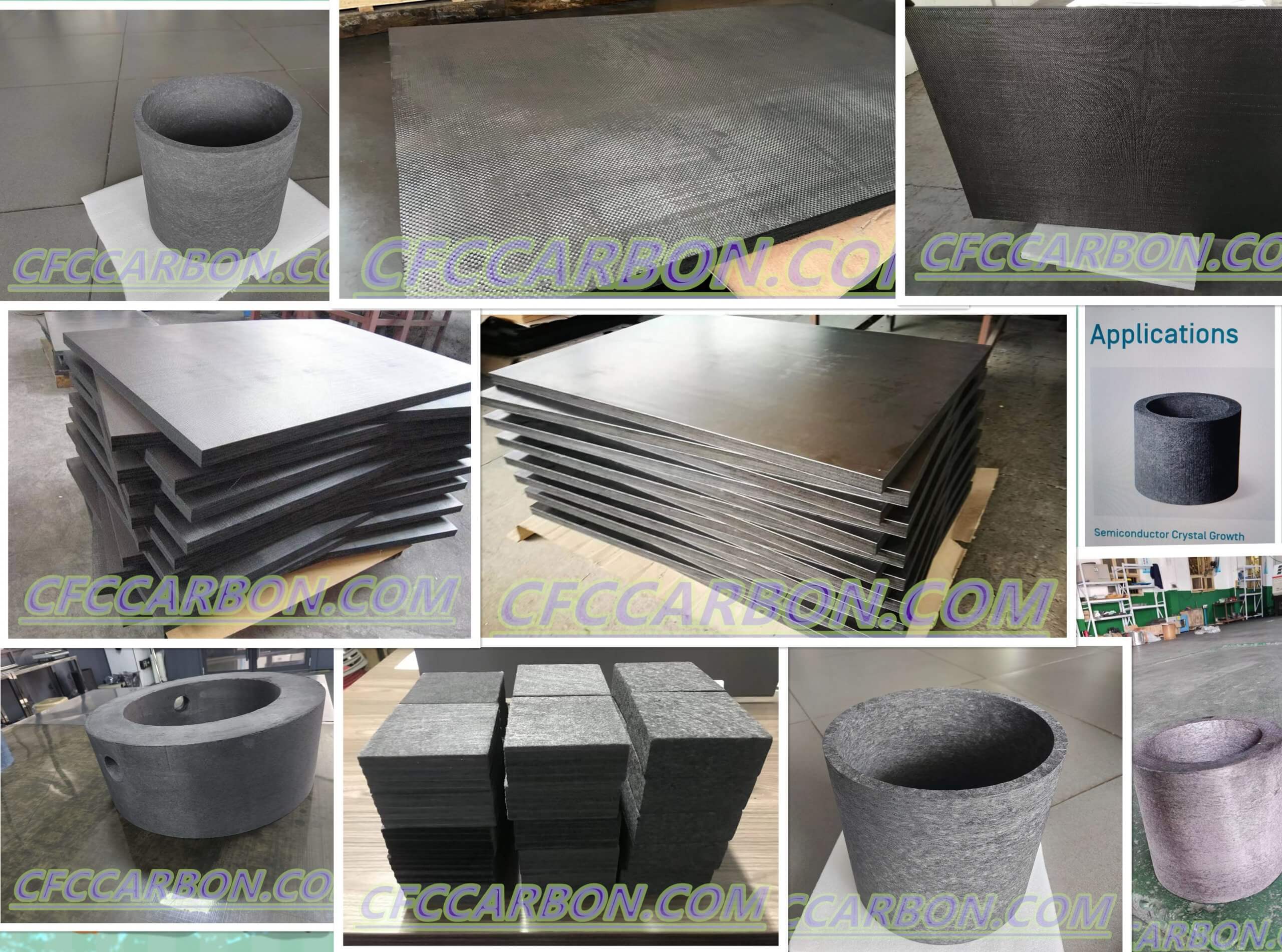After being stabilized, the fiber is finally carbonized and sometimes graphitized by slowly heating it in an inert atmosphere to temperatures ranging from 1000C to 2800C. By definition, carbonization implies heat treatment at temperatures of 1700C or less, whereas graphitization means heat treating to higher temperatures, often approaching 3000C. During this final heat treatment, almost all non-carbon elements are driven from the fiber. In fact, the carbon content of the final fiber can range from 80% to in excess of 99%, depending upon the final

carbon graphite felt insulation soft hard rigid board short long fiber chopped material manufacturer factory China (B)
carbonization temperature. Often, a carbon resistance furnace is used for this process step. Thus, the inert atmosphere not only prevents oxygen from pitting the fiber at these high temperatures, but also it protects the carbon heating elements of the furnace from oxygen attack.
Because gases such as CH4, H2O, NH3, N2, HCN, CO2, and CO are evolved at a rapid rate as the stabilized precursor fiber is heated to 1000C, relatively slow heating rates are used initially. However, above 1000C, only smaller molecules such as H2 and N2 are given off. Thus, carbonization often is conducted in two steps: precarbonization and carbonization. Even though the carbon content of PAN is 54%, carbon loss during the heat treatment steps makes the overall yield for converting PAN precursor fiber to carbon fiber approximately 40 to 45 percent.
Both the final heat treatment temperature and the degree of molecular orientation of the molecules in the thermoset precursor fiber govern the modulus of the final carbon fiber product. As in all brittle materials, structural flaws limit the strength of the final carbon fiber. Thus, the purity in the precursor fiber, the final carbonization conditions, and even the void content of the precursor fiber can influence the strength of the final carbon fiber.
After final heat treatment, most PAN-based carbon fibers are given a surface treatment to improve their bonding with polymeric matrix materials. Although surface treatment results in some roughening of the surface, its primary effect is to increase the concentration of oxygenated groups on the fiber surface. Various techniques can accomplish this: exposing the carbon fibers to gases (such as air or carbon dioxide) at elevated temperatures, submerging the fiber in sodium hypochlorite or nitric acid solutions, or electrolytically etching the fiber. The principal goal of this process step is to increase the interfacial bond strength between the fiber and the matrix material and, thus, improve the interlaminar shear strength of the carbon fiber composite.
After being surface-treated, a small amount of size (approximately 1% by weight) is added to improve the wettability of the carbon fiber. Normally, this size is a low molecular weight from the anticipated matrix polymer. In other words, epoxy-sized fiber is coated with a low molecular weight epoxy. It should be mentioned that primary objective of this size is to improve the wettability of the fiber, no to improve its handleability. Therefore, even sized fibers can be difficult to handle during perform weaving and composite fabrication.
related news /articles:
Refractory high temperature resistant material: graphite insulation felt
Characteristics of CC composite materials
Introduction of manufacturing of carbon fibers-Pan-based carbon fibers